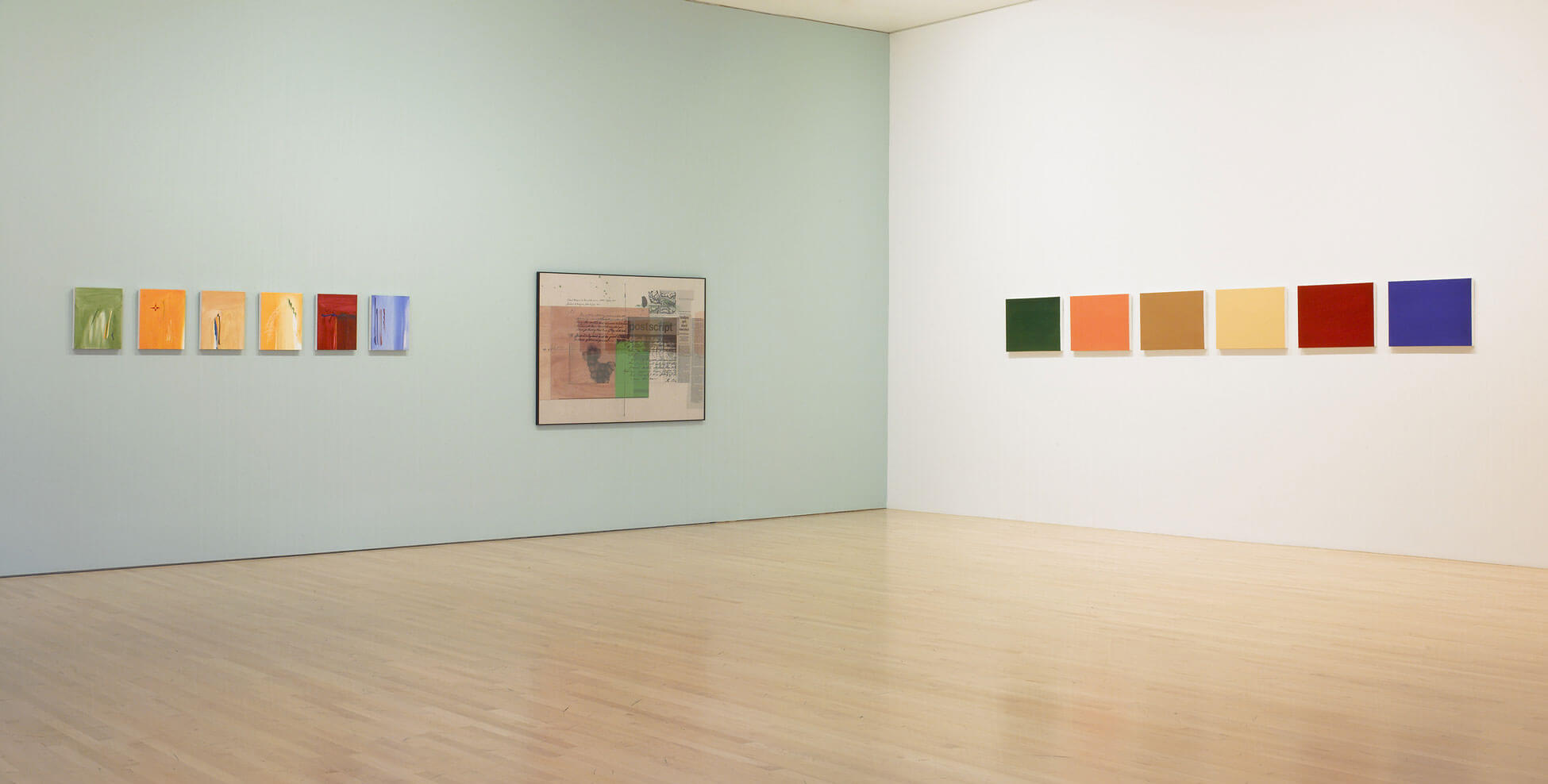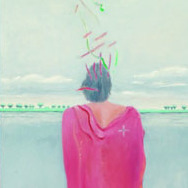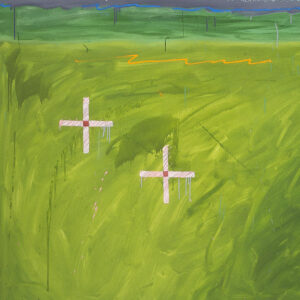Palisade II 2007

Robert Houle, Palisade II, 2007
Three-part painting installation: twelve oils on canvas, six at 40 x 30 cm each, six at 45 x 60 cm each, and one digital photographic print (Postscript), 121.9 x 163.2 cm
National Gallery of Canada, Ottawa
Palisade II is an installation consisting of three parts: six gestural paintings that include pictography and abstracted figuration on one wall and six monochromatic paintings on another. In between them is Postscript, a collage of photocopied texts and images resembling an historical archive. The work is a memorial to the Seneca, Keepers of the Western Door of the Six Nations of the Haudenosaunee, who were the only group of this alliance to join the other nations that resisted the British during Chief Pontiac’s confederacy in the 1760s—one of the most successful campaigns by First Nations against the European invasion, though it did not ultimately repel the British. In six delicate gestural paintings Houle references each of the six nations, and a corresponding monochromatic work suggests the commingling of art, nature, and history.

The installation connects with a previous work, Palisade I, 1999, that consists of paintings recalling the tactics of General Jeffrey Amherst, commander of the British military in North America during the Seven Years’ War (1756–63), and his collaborator Colonel Henry Bouquet. They had a diabolical plan to present smallpox-tainted blankets and a snuff box containing an infected cloth to a Seneca delegation during “peace” negotiations. The insertion of the text component Postscript into Palisade I unbalances the whole as it refers to the history of smallpox and the fatal effect of this biological warfare using European pathology on First Nations peoples in 1763.
In Palisade II the collage Postscript is the hinge that joins the two painting installations and presents the key to understanding the history. As well, the arrangement of the canvases mirrors the geographical deployment of the Six Nations from west to east (left to right): green (Seneca), orange (Cayuga), gold (Onondaga, the Council Keepers), yellow (Tuscarora), crimson (Oneida), and cobalt blue (Mohawk, Keepers of the Eastern Door). As with Parfleches for the Last Supper, 1983, the abstract paintings are autonomous objects. Houle thought of the panels of the gestural paintings as “medicine bags” and completed one daily, as a means to maintain immediacy, vibrancy, and simplicity within them.
While commemorating the Six Nations’ struggle against British colonizers, Palisade II confirms Houle’s place within modernism through the use of colour and accompanying elements that visually reference the works of Abstract Expressionist painter Barnett Newman (1905–1970).

 About the Author
About the Author
 More Online Art Books
More Online Art Books
 Acknowledgements
Acknowledgements